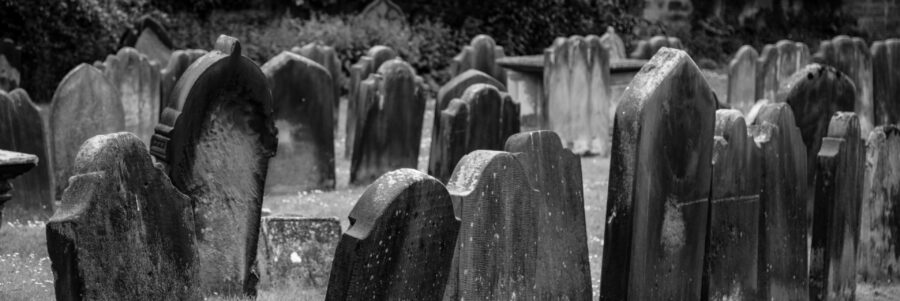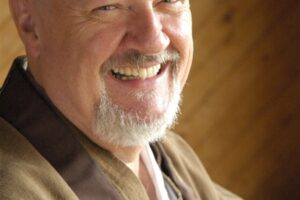
The recent premature death of the daughter of one of the Sangha’s members, and the recent shootings at the university in Huntsville, Alabama, triggered much anguish and suffering, and raised questions in the communities at ASZC and Green Mountain Zen Center. In officiating at the funeral, and in a conference with GMZC, I sought to place these events in the context of Zen Buddhism, and will attempt to recount and magnify upon some of the more pertinent points here, beginning with the premature death of a loved child, the worst-case scenario for any parent.
The Zen funeral ceremony for human beings is directed to the deceased
zenkai taiun michael elliston, roshi
First it must be understood that Buddhism, Zen in particular, offer no easy answers to the grief and pain that we suffer on the loss of a loved one, or the frustration that we feel in witnessing senseless acts of violence. However, Buddhism does have a unique viewpoint on death that ranges from the serious and solemn to the silly.
The Zen funeral ceremony for human beings is directed to the deceased, as, for that matter, is that for sentient beings. We perform funerals and memorials for pets as well as people. So-called lower animals are sentient beings, so they share the buddha-nature with humans. And they are given a dharma name at their funeral, just as are human beings. This point is necessary to understand the overview of Buddhism, that we are not in this alone, and that a human death is not unique, or separate from the great tide of living and dying that is in constant flux, dukkha.
Historically, monks and nuns have been known to value the training inherent in being close to death. They have pursued, even competing with each other, such experience, by attending those on their death bed (which today some of us are engaged in as hospice and end-of-life service), by participating in funerals, and sitting in meditation in the open cemeteries of the time where corpses would be exposed and rotting. Very different from the Western aversive attitude.
When performing a funeral service, we are under certain pressures — not to embarrass ourselves or the family, not to defame the Three Treasures — et cetera. But in Zen, as priests, there is something a bit more pressing — we are expected to have some understanding of life and death. This may not be fair, and in any case should not constrain us from doing our best, but it can be daunting. There was an incident in the history of Zen that I came across, I believe in one of Trevor Leggett’s Zen Readers, that illustrates this point. Paraphrasing wildly, a young monk performed a funeral for a very young girl who had died prematurely, and whose parents were very old. The author took pains to point out that during the (Rinzai Zen) funeral, the priest shouts out a “katsu” — the fabled shout of Rinzai, or Linchi, which is directed to the deceased. After the funeral, the parents approached the priest, and the father asked, “Where is my daughter now?” Because the young priest was unable to answer, he retired from the public priesthood. One assumes he returned to the monastery.
So the fundamental question in Zen, when another dies, is, Where are they now? It is the same question we should ask ourselves about our own mortality. It is easy enough to accept that, from one thought-moment to the next, nothing tangible transfers, so that we can eschew the notion of a self-existent self with little risk, notwithstanding the clear and apparent continuity of consciousness (of a self) from moment to moment. But when it comes to that last thought-moment of life segueing into that first thought-moment of death, we have a problem. We want, we dearly need, to know that something survives, and makes the leap. That something is usually referred to as the soul, or true self, the spirit that animates the flesh.
Anyone who has witnessed a death, of a person or a pet, can testify to the shock and mystery that accompanies this moment. What was just the moment before animated and alive, with all the attributes of personality and traits that we had come to know and love, becomes a lump of flesh. We treat that lump with great tenderness, in preparation for its burial or cremation, and it is a wrenching experience to suffer the accompanying grief that is so terrible in its finality. Again, Zen does not pretend to have an easy answer for this. Some may imagine that Buddha, after his awakening, was never again subject to the suffering of grief at the death of his family and followers. But nowhere do we find evidence that Buddhism holds out this kind of promise. Buddhism is about meeting suffering head-on, not trying to avoid it. Buddha himself equated existence with suffering, the universal suffering that is most neutrally expressed as inexorable change.
One of the tales about Buddha’s life that gets to this point is, again paraphrasing, the “Mustard Seed Parable.” The story goes that Buddha’s reputation spread, and he was known in the India of his day as a “siddhu” or holy man, in possession of “siddhis” or paranormal powers. A young woman who had given birth to a stillborn child heard of him and came, carrying her dead infant, to find him. In grief and desperation, she asked if there were some mystical potion that would restore her baby’s life.
In an act that many today would find politically incorrect at best, and indifferently cruel at worst, the Buddha confirmed that indeed there was such a potion, but it required a special ingredient, a common mustard seed — but one obtained from a household in which there had been no incident of premature or unnatural death such as the young mother had experienced. Frantically, she ran from house to house in the village, in each of which she found they had had a similar tragedy, and so were unable to provide the crucial mustard-seed. At length, she came to a realization. No matter how many homes she visited, no matter how many villages, she would never be able to find such a mustard seed. Upon returning to Buddha, she affirmed her understanding of the universality of her suffering. In that, it was overcome, but not ended.
Bodhidharma, the 28th Patriarch of India, and the first in China, on his deathbed, was said to have expressed to each of his four survivors, the third of which was a nun, that “You have my skin; You have my flesh; You have my bones; You have my marrow,” upon their each expressing their understanding gained while training with him. The fourth became his historical successor, and so is sometimes interpreted to have greater recognition, indicated by the marrow. But the skin, flesh, bones and marrow cannot be separated; they are together one living being. So all four dharma heirs were not unequal in Bodhidharma’s view. They constituted his living legacy, that which would carry on his teaching after his death.
Daikan Eno, the famed Sixth Patriarch in the Chinese lineage, also known as Huineng in Chinese, was said to have called his students together when he felt the onset of death, to give them his last teaching. The story goes (Platform Sutra) that they were distraught at the loss of their dear teacher, in tears and lamenting, all but one. Master Eno chided them for their lack of understanding, commenting that if he did not know where he was going, he would also be afraid. But since he did, he was not. The one who was not ostentatiously grieving became his successor.
Pardon me while I paraphrase Master Dogen’s Shobogenzo Mujo—Seppo, translated by Nishijima and Cross, Book 3 page 113 in the four-volume edition we typically use for Dogen study. The subtitle as translated is The Non-Emotional Preaches the Dharma, and the exchange between Master Eno’s successor, Master Nan-yo Echu (died 755) and his student monk characterizes the non-separation of the sentient and insentient as propounded by Zen Buddhism. As the authors explain, “mujo means the non-emotional,” inanimate or insentient things, and “seppo means to preach the Dharma,” “so mujo-seppo means inanimate things preach the Dharma.” This is not really a mystical statement, if interpreted from the perspective of dharma as law, the way in which things necessarily exist in accordance with the laws of physics. But their unemotional state is what is being, in essence, promoted here, as one we could or should emulate. This does not suggest, however, that we should strive to be unfeeling, like a stone.
Ujo-ni (“ni” means nun or female) is the posthumous dharma name I chose for the deceased in the funeral ceremony, as it means the opposite of Mujo. Ujo represents all of sentient beings, as it means “having feelings,” and the beloved daughter is the very epitome of a feeling human being. At the funeral, I read, paraphrasing for brevity, the dialog master Dogen quotes in this fascicle, and in what follows I borrow again shamelessly, but with attribution, from Nishijima and Cross.
The gist of it is the monk asks whether “the insentient can really preach the dharma, or not?” The Master says “They are always preaching ardently; they preach without interval.” The monk asks “Why do I not hear it?” The Master ripostes “Whether or not you hear it yourself, you should not disturb others who do hear it.” The monk says, “I wonder what kind of person is able to hear it.” Master: “Saints are able to hear it.” Monk: “Does the Master hear it or not?” Master: “I do not hear it.” Monk: “If the Master himself does not hear it, how does he know that the insentient preach the Dharma?” Master: “It is convenient that I do not hear it. If I heard it I would be on the level of the saints, and then you would not be able to hear me preaching the Dharma.” Monk: “so living beings are without the means [to hear].” Master: “I preach for living beings. I do not preach for saints.” Monk: “What are living beings like after they hear?” “At that time they are beyond living beings.”
Apologies again to the erstwhile translators, but the fulsome quote is needed to get to the point. While there is a difference between the insentient and the sentient, there is no actual separation. Just consider in your own living body, just now, what of it is sentient, 100%, and what portion insentient? What and how much of what we call our selves is actually alive? How much, what percentage, is non-living? How much of that changes upon the advent of death?
The Huineng incident reminds us of the comment attributed to Mark Twain, toward the end of his life, when asked about his impending demise, and was he afraid. He said something to the effect that how could he be afraid of returning to whence he had come? This brings up an interesting point. We seem so terrified of death, yet we are not afraid of birth. How many of us remember the terrible trauma that had to accompany our removal from the womb, especially those of us who were squeezed through the tiny birth canal (rather than Cesarean)? It may be that we do not remember owing to traumatic shock, or that our awareness was in such a primitive state as to be unable to record the event. I would opt for the former.
Birth is surely as traumatic as death. In fact, it may not be going too far to say that in Buddhism, rebirth cannot be separated from the death experience — that they are in effect simultaneous, the same event. This may be heresy, but who is to say? The only record I have come across (other than that of Buddha) that claims direct insight into these matters is in the Autobiography of a Yogi, where he claims to have heard his mother and father talking while in the womb, and promptly figured out what language they were speaking, and could understand it!
Take the above as you will, with as big a grain of salt as you need, but in my case most of my life is not worth remembering, and the event of birth itself probably tops the list. My mother confessed that she tried to abort me by jumping off the back porch. I got back at her by having an unusually large head, which I blame on her jumping, me being upside down inside, and all.
Nonetheless, I feel it instructive to look forward to death as déjà vu of birth; it makes it feel a bit more familiar. And the process of “dying on the cushion” touted in Zen is probably what enabled Masters Bodhidharma, Huineng, Dogen and countless others to recognize the onset of the symptoms of death, and at the “appointed time,” as we like to say (though who is doing the appointing remains in question), sat down in zazen and died. Just like that. Been there, done that. And here we go again.
The reader may have noticed a subtle but nonetheless undeniable progression from the relatively serious and respectful treatment of the subject, in the above, to a progressively more irreverent and perhaps inappropriate light-heartedness, even a sardonic or dismissive tone, as we near the end of this disquisition, which already is overlong, so I will not apologize again. It should be said that I have just been re-reading the works of J. D. Salinger, following his recent and completely timely death, and so I can blame most of this on the great circular analyzer of his own analysis. But to move to the truly irreverent, I would like to recount a story, attested to be true, with which I closed my comments following the funeral ceremony. This illustrates the other end of the spectrum in Zen, the almost mocking sense of deprecation at one’s clinging to self.
Yet another monk (think “monkey” to relieve the tedium — there goes the parenthetical J. D. again), when approaching the end, ran around fervidly picking the brains of fellow monks (and nuns, one would conjecture), how others that they had known or heard tell of had died. After sufficient (if unnecessary) research on the subject, he asked all who would still tolerate him if any one had died standing on his (or her) head. As no one could testify that someone indeed had taken that unseemly way out, the monk, when entering into death, stood on his head and promptly expired.
His sister, as her bad luck would have it, was a nun, living in a different monastery. When she came to attend the funeral ceremony (very dignified affair for a Zen priest), the corpse was still standing upended (one surmises in a corner), and she immediately kicked it over, declaring “you never had any respect for anything in your life, and you have no respect even in death.” The story concludes that they buried him upside down (Zen meets the real Till Eulenspiegel).
More seriously, and more recently, in 1986, when he was just about my current age, I performed a private (family only) funeral ceremony for my own father, which was my first, and the worst. I was distraught with grief. He had a regular ceremony performed by a minister who never knew him, and it showed. Later, in 1997, my Zen teacher, Matsuoka-roshi died, and remarkably, I could feel no grief. Missed the beloved old Buddha, of course, but it would have been in a sense disrespectful to mourn him. His whole life had been about life and death, after all, and if he was not ready, who would be? When I would call him toward the end of his life, he was in a nursing home in Chicago, and would always answer with a cheery, “Not dead yet!” Or “Pretty soon go to heaven!” I feel sure he is in Tusita heaven, laughing uproariously at us.
When my mother died in 2007, I was able to perform her ceremony publicly, in a small town in southern Illinois, where the service was accepted graciously by family and friends alike, in spite of my freakish appearance in medieval Japanese regalia. She had lived a longer, happier life in many ways than my dad, so her passing was much less tragic. At least it seemed so.
So when we approach the premature death of a loved one, or even of a perfect stranger, the view in Buddhism seems to be that they are like a Bodhisattva. A crib death or other otherwise inexplicable death (in the context of certain religious beliefs) is said to illustrate the impermanency of life. So whether intentionally or not, these only good who die young are teaching the fundamental impermanence of existence, the key attribute of life that makes it so precious, notwithstanding the principle of rebirth (the one reborn is not the same one that dies).
In an excerpt read by Zenku Jerry Smyers, who as Doan lead the chanting service at the memorial, the words of Matsuoka-roshi spoken at the funeral of a young girl who had died, capture the poetic spirit of Zen’s warm embrace of the inevitability of death, even if premature:
Whenever a young child departs from this life, our hearts are always touched by the untimeliness of the death, and we cannot help but ask, “Why did this happen?” We know that life is only with us for a short time, but we seek a reason for such a young one’s being taken from us. But, the more we ask this question, the more we suffer. We cannot explain life and death in this way.
Instead, let us recall the story of the beautiful cherry blossom. There is an old saying in Japan which compares human life and destiny to this delicate blossom. Picture a gorgeous cherry tree in full bloom. It is simply beautiful. But, when the time comes, the lovely flowers start to be blown away by the wind. When the spring winds begin to blow, some of the cherry blossoms are quick to go with the breeze. And yet others stay in bloom a little longer. But, sooner or later, even the very last cherry flower on the tree will someday be blown away by the wind.
We must think of our lives, and the lives of our loved ones, in this manner. Life is ever-changing and unpredictable. We never know what it will bring, or how long it will last. We have this in common with all other people, and with all the rest of existence. We should not think of ourselves as distinct from the great stream of life, but as part of it. As the wind blows, so do we go. The wind in life is death. The wind can blow in the springtime of life, or in the summer of life, or its autumn or in its winter. When it blows, it often takes some of the young flowers with it.
When a flower comes into bloom in the spring, we know than it will fade someday. For this reason, we say that life and death are one. The flower that opens its petals to the sunshine of the day closes them with the darkness of the night. And yet, night and day are actually one. They blend into one another at dawn and at dusk. Everyone has his dawn at his birth, and each also has his dusk at his death. Let us think of life and death as a dawn and dusk. At dusk, we are sorry to see the day fade away, but we should think of the beauty of the day, not the darkness of the approaching night. When the petals of a flower close at dusk, we should think of the beauty of the blossom that is now taking its rest.
So let us regard the deaths that we encounter, whether as the result of action taken by others (the Huntsville murders), or actions taken by oneself, or the workings of nature.
As this has gone on overlong, exceeding a “byte” by a country mile, I will defer to next month following on the issue of death in the former case. We will explore its underlying tinge of neurosis, in the context of a death-aversive culture. I will also try to draw some connection between the fear of death and the lust for life — the first posited as a motivation that drives, and is masked by, other desires — sometimes driving us to distraction, addiction, and other self-inflicted suffering, including suicidal and homicidal death.
Gassho,
Hojo









